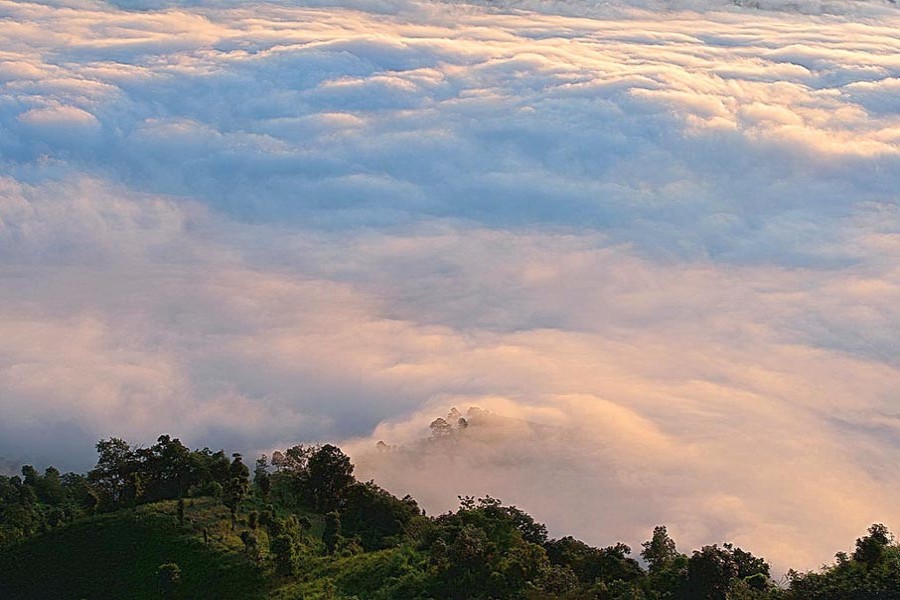A prospective tourist spot long out of notice of forest and hill grabbers could not finally save itself from the swoop of syndicates. Perhaps they were biding time and were in search of legal loopholes or administrative weaknesses. When the land, water and woodlands of the whole country are now under the lens of greed focused by grabbers, how could this particular spot remain protected from them? The place is located in the Narsingdi district.
The range of tree-covered hillocks in Sonaimuri Tek of the district beside the Dhaka-Sylhet Highway must have been seen by many people travelling through that area. The whole region comprises a vast swathe of plain land, with the nearest hills quite far --- in Cumilla's Lalmai zone. A section of geologists link the hilly nature of this part of greater Dhaka's Narsingdi to an ancient extension of the Bhawal area in Gazipur district. Some others would like to call it unrelated to the Bhawal area and also isolated, the breadth of which was once far greater than what remains today. Centuries of encroachment on the rolling land by unscrupulous local people have squeezed the area's size, making it finally a flat plain beside the River Meghna. Portions of the hillocks, however, stand still today. Although nestling in the midst of dense villages, these remnants of idyllic hillocks and forests later became exposed to the defiant land grabbers. With the grabbing process on, the eye-catching tree and bush-filled earthen mounds began falling victim to greater numbers of neighbourhood people. Virtually the grabbing became a free-for-all. However, unlike today the encroachment activities in the past were carried out clandestinely. Now they are open and carried out in broad daylight. Arrogance and display of muscle power are the two dominant features that distinguish the hill-levelling operations in Narsingdi.
A government ban on harming these reserved hillocks has been in force since long. For a considerable period, the forests and hillocks remained protected. Local youths and those from far-away areas at one time started using the hillocks and forest stretches as recreational or picnic spots. What used to attract them to the site were its tranquility and the picturesque look. Nowadays the site has almost become off-limits to the holidaymakers. In their place, it is the land grabbing syndicates which rule the roost here. Digging of the hills' earth and carrying them to different areas for different purposes continue unabated. They apparently enjoy the blessings of a corrupt section of the local administration.
Flattening hills and cutting forests to plunder their soil and wood has long been a common practice in the country. Hundreds of hills and forests have disappeared as part of the process. At one time, illegal destruction of forest-covered hills was limited to Chittagong Hill Tracts (CHT) and the greater Sylhet area. The Chittagong district and its outlying areas also fell within the ambit of the affected areas. Included prominently in these areas is Sitakunda. Due to regular hill-levelling by encroachers, the hills and hillocks in the area have started thinning out fast. A similar spectacle could be found in the 17km range of hillocks in the Lalmai area near Cumilla. The hill cutting practice invariably invites landslides during the rainy season. The hazard has also become part of life to people living on the slopes of small hills in the Chauddagram upazila, also in Cumilla. In a plain land like Bangladesh, the CHT and the greater Sylhet hills are added blessings of nature. People are lucky enough to have a few other stretches of hills and hillocks. They include Birishiri in Netrakona and Jamalpur's Sherpur. All of them help immensely in maintaining environmental balance. The levelling of smaller hills, thus, cannot be condoned.


